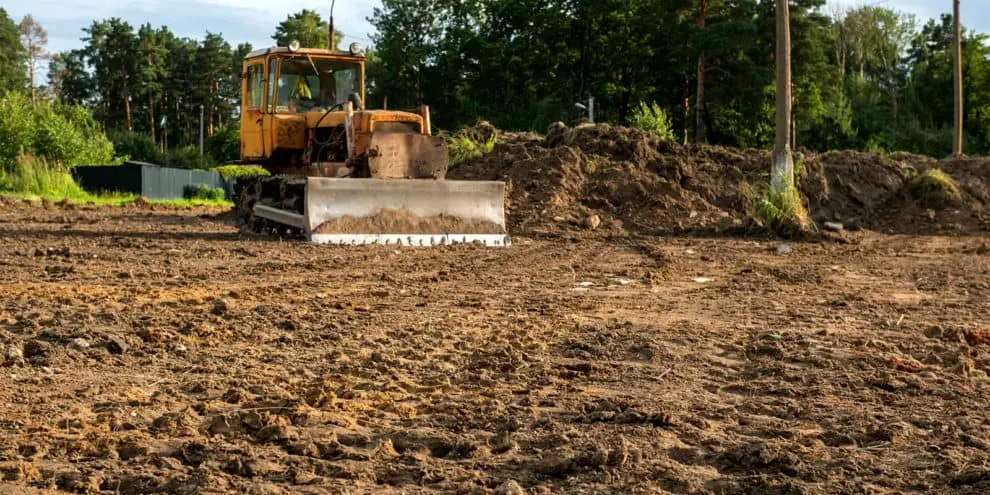Land Clearing Explained: Reasons and Benefits
IntroductionLand clearing involves removing trees, stumps, bushes, and other vegetation to prepare a piece of land for building, farming, or other uses. It is a crucial in preparing land for development, ensuring safety, and enhancing its usability. Depending on the size and nature of the area, land clearing can be done using various methods, including manual labor, mechanical Clearing, and controlled burns.
Importance of Land Clearing
Land clearing plays a significant role in various industries and activities:
1. Agriculture: Land clearing is essential for expanding agricultural operations and increasing crop yields. Farmers can remove obstacles and create larger fields for planting crops by clearing land, improving productivity.
2. Urban Development: In urban areas, land clearing is necessary for constructing buildings, roads, and other infrastructure. It helps accommodate the growing population and meet the demand for housing and commercial spaces.
By creating firebreaks and clearing vegetation around structures, land3. Fire Prevention: Clearing land of dead vegetation and overgrown brush helps reduce the risk of wildfires. Land clearing can protect property and save lives.
4. Wildlife Habitat Restoration: In some cases, land clearing is done to restore natural habitats for wildlife.
Land managers can restore native plants and eradicate alien species to boost biodiversity and preserve regional ecosystems.
Land clearing is a critical process contributing to economic development, environmental management, and public safety. Proper planning and sustainable practices are essential to ensure land-clearing activities are carried out responsibly and with minimal environmental impact.
Types of Land Clearing
Land clearing can be done using various methods, each with advantages and disadvantages. The three main land-clearing methods are manual, mechanical, and chemical.
Manual ClearingClearing: Manual Clearing involves using hand tools such as chainsaws, axes, and machetes to remove vegetation. This method is suitable for small-scale clearing projects or areas with difficult access. While manual Clearing is labor-intensive and time-consuming, it is more environmentally friendly than other methods and allows for selective Clearing of specific plants.
Discharge ClearingMechanical Clearing: Mechanical DischargeClearing is the process of swiftly and effectively clearing vast tracts of land using heavy equipment like bulldozers, excavators, and mulchers. This technique works well for clearing vast areas of bush and trees and removes stumps. However, mechanical Clearing can be costly and may cause soil compaction and damage to the land if not done carefully.
Chemical Clearing: Chemical clearing involves using herbicides to kill vegetation. This method is often used in conjunction with mechanical ClearingClearing to prevent regrowth. Chemical clearing is effective for controlling invasive species and clearing large land areas but can have negative environmental impacts if not used correctly.
Each land-clearing method has its own set of benefits and challenges. The choice of method depends on factors such as the size of the area to be cleared, the type of vegetation present, and the desired outcome of the clearing project. The sustainability of the chosen approach and its influence on the environment must be considered when clearing land.
Reasons for Land Clearing
Land clearing is necessary for various reasons, each serving different needs and purposes. The main reasons for land clearing include agricultural expansion, urban development, infrastructure development, wildfire prevention, and pest and disease control.
Agricultural Expansion: Land clearing is often done to create more space for agriculture. By clearing land, farmers can increase the area they can use for cattle or crop, which will enhance the food supply to satisfy the expanding demands of a growing population.
Urban Development: Land clearing is essential for urban development projects such as constructing buildings, roads, and other infrastructure. Clearing land allows for expanding cities and towns to accommodate the increasing population and provide space for residential, commercial, and industrial activities.
Infrastructure Development: Land clearing is necessary to develop infrastructure such as highways, railways, airports, and utilities. Clearing land allows constructing essential transportation and communication networks to be constructed, improving connectivity and facilitating economic growth.
Wildfire Prevention: Land clearing is often used as a preventive measure against wildfires. By removing dead vegetation and constructing firebreaks, land clearing can help lower the danger of wildfires and save communities and natural areas from destruction.
Pest and Disease Control: Land clearing can also help control pests and diseases that affect crops and livestock. By clearing land and removing potential breeding grounds for pests, farmers can reduce the risk of infestations and protect their crops and livestock from damage.Land clearing is a vital for various purposes, from expanding agricultural activities to supporting urban and infrastructure development. However, it is essential to carry out land-clearing activities responsibly and sustainably to minimize environmental impacts and ensure long-term benefits.
Environmental Impact
Land clearing can have significant environmental impacts, affecting ecosystems, wildlife, and the planet's overall health. Some of the critical environmental impacts of land clearing include deforestation, habitat loss, soil erosion, and wildlife impacts.
Deforestation: Land clearing often involves removing forests, leading to deforestation. Deforestation can have far-reaching effects, including loss of biodiversity, disruption of ecosystems, and increased greenhouse gas emissions. Forests are crucial in regulating the climate and supporting various plant and animal species. Deforestation can also contribute to climate change, as trees absorb carbon dioxide from the atmosphere.
Habitat Loss: Land clearing destroys natural habitats for many plant and animal species. Loss of habitat limits the amount of land and resources that wildlife may use to live and prosper, which is one of the leading causes of species extinction. Additionally, it might upset ecological balances and food chains, further reducing biodiversity.
Soil Erosion: Vegetation clearing, particularly in places with steep slopes or unstable soils, can raise the danger of soil erosion. Erosion can result in the loss of rich soil, the sedimentation of water bodies, and a higher risk of landslides without vegetation to hold the soil in place.
Impact on Wildlife: Land clearing directly impacts wildlife by destroying their habitats and reducing food sources. Many species cannot adapt to rapidly changing environments, leading to population declines and increased risk of extinction. Wildlife corridors and natural habitats are essential for the survival of many species, and land clearing can fragment these habitats, making it difficult for wildlife to move and find food.
Land clearing can have significant and lasting environmental impacts, highlighting the importance of sustainable land management practices and conservation efforts.
Benefits of Land Clearing
Land clearing can provide several benefits contributing to agricultural production, economic development, resource access, and safety when done responsibly.
Increased Agricultural Production: Land clearing opens up new areas for agriculture, allowing farmers to expand their operations and increase crop yields. Cleared land is also easier to manage, leading to improved farming practices and higher productivity.
Economic Development: Land clearing plays a crucial role in economic development by creating space for infrastructure, residential and commercial projects. It offers opportunities for investment, expansion, and employment creation across various industries, advancing the general well-being of localities and geographic areas.

Improved Access to Resources: Clearing land can improve access to water, minerals, and energy sources. It allows for the development of irrigation systems, mining activities, and renewable energy projects, enhancing resource availability and utilization.
Firebreaks and Safety: Land clearing can help create firebreaks and reduce the risk of wildfires. Land clearing can protect communities and natural habitats from the devastating effects of wildfires by removing combustible materials and creating barriers between vegetation and infrastructure.
Overall, land clearing, when carried out sustainably and with proper planning, can provide significant benefits for agriculture, economic development, resource management, and safety.
Methods and Techniques
Land clearing involves various methods to remove vegetation and prepare the land for different purposes. Some key aspects include using clearing equipment, safety measures, and adherence to environmental regulations.
Clearing Equipment: Land clearing equipment includes various tools and machinery for different cleaning tasks. This equipment can consist of chainsaws, bulldozers, excavators, mulchers, and herbicide applicators. The choice of equipment depends on factors such as the size of the area, the type of vegetation, and the desired outcome of the clearing project.
Safety Measures: Safety is paramount in land clearing operations. To avoid mishaps and injuries, appropriate safety precautions must be taken. This entails ensuring equipment is utilized and maintained correctly and donning the required protective gear, such as helmets, gloves, and boots. Additionally, workers should be trained in safe operating practices and be aware of potential hazards.
Environmental Regulations: Land clearing is subject to environmental regulations to protect ecosystems and wildlife. These rules could change depending on the area and the kind of vegetation being removed. Obtaining the required permissions and adhering to regulations is imperative to prevent fines and penalties. Measures such as erosion control, wildlife protection, and reforestation may be necessary to mitigate the environmental impact of land clearing.
Overall, effective land clearing requires appropriate equipment, safety measures adherence, and environmental regulation compliance. By following these guidelines, land clearing can be done efficiently and responsibly, minimizing negative environmental impacts.
Challenges and Controversies
Land clearing is often accompanied by challenges and controversies, particularly concerning deforestation, environmental impact assessment, and indigenous land rights.
Deforestation Concerns: One of the significant challenges of land clearing is deforestation, which permanently loses forests and their biodiversity. Deforestation exacerbates climate change due to the critical role of wood in removing carbon dioxide from the atmosphere. It also increases the risk of extinction by causing many plant and animal species to lose their habitat.
Environmental Impact Assessment: Before beginning land clearance activities, an environmental impact assessment is typically required to examine any ecological implications. EIAs assist in identifying and reducing possible effects like biodiversity loss, water pollution, and soil erosion. Conversely, opinions differ on the sufficiency of mitigation strategies and the efficacy of EIAs.
Indigenous Land Rights: Land clearing can impact indigenous communities who rely on the land for their livelihoods and cultural practices. Indigenous land rights are often overlooked or disregarded in land clearing projects, leading to conflicts and displacement of indigenous peoples.
Sustainable land management practices, respect for indigenous rights, and practical environmental assessments are essential for mitigating these negative impacts.
FAQs
1. What is land clearing?
A plot of land is cleared of trees, plants, and other impediments to making way for building, farming, or other uses.
2. Why is land clearing necessary?
- To make room for infrastructure, urban growth, and agriculture agriculture, the land must be cleared. It also facilitates better resource access and lowers the danger of wildfires.
3. What methods are used for land clearing?
Land clearing can be done manually using hand tools or mechanically using heavy machinery such as bulldozers and excavators. Chemical clearing, using herbicides, is another method, but it is often used in conjunction with other methods.
4. What are the environmental impacts of land clearing?
Land clearing can lead to deforestation, habitat loss, soil erosion, and impacts on wildlife. It is essential to carry out land clearing responsibly to minimize these impacts.
5. Are there regulations for land clearing?
Yes, there are regulations for land clearing, which vary by location. These regulations often require environmental impact assessments and compliance with measures to mitigate environmental impacts.
Conclusion
Land clearing is a complex process that involves various methods and techniques to prepare land for development and agriculture. While it offers benefits such as increased agricultural production and economic growth, it also presents challenges and controversies, including deforestation concerns and impacts on indigenous land rights.
It is essential to approach land clearing cautiously, considering its environmental impacts and adhering to regulations and safety measures.
As individuals and communities, we can play a role in promoting responsible land-clearing practices. By supporting sustainable land management initiatives and advocating for environmental conservation, we can help protect our planet's natural resources and biodiversity.
When planning a land clearing project, consider the environmental impact and explore alternative methods to minimize ecosystem harm. Stay informed about environmental regulations and seek expert guidance to ensure your land-clearing activities are conducted responsibly.
Together, we can work towards a sustainable future where land clearing is done, balancing development needs with preserving our environment for future generations.




